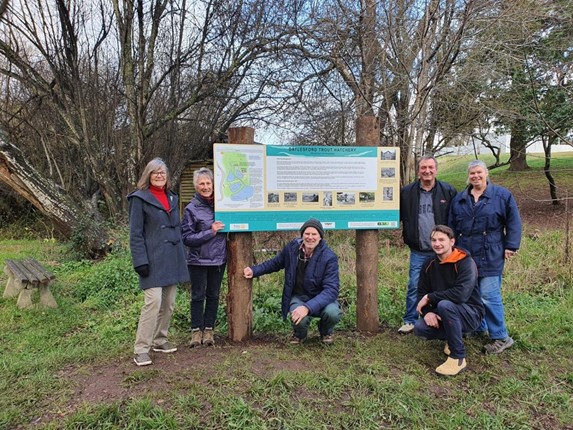Local Community Projects
Daylesford Trout Hatchery – gone but not forgotten!

In 2020, Daylesford Rotary supported the Friends of Cornish Hill by funding the creation of interpretative signage recording the important, but little-known history of the Daylesford Trout Hatchery in Cornish Hill reserve in the heart of Daylesford.

Records show that the Daylesford Anglers Club was hatching trout as early as 1926-27. In 1930 they had a hatching box at Jubilee Lake where 40,000 ova were successfully hatched. Later that year a small yearling pond was established at the Lake Reserve but was short-lived. According to the minutes of the Daylesford Anglers’ Club, in 1931 the club president John E Grant offered his property for hatching, which consisted of a series of terraced ponds. The Daylesford Water Trust supplied the water free of charge.
In 1952-3 The Daylesford Anglers Club volunteers built their own hatchery - the remnants of which can still be seen today at Cornish Hill. The hatchery building was weatherboard and housed 5 hatching boxes made of soft wood and sealed with tar. These boxes had the capacity for 60,000 ova (unfertilised eggs) which were placed on glass grills laid inside the boxes.
During its hey-day, the hatchery and ponds were in immaculate condition. The ends of most of the hatching boxes carried names, in gold lettering, of well-known trout waters.
Tragically, the hatchery was forced to close in 1975 after the nearby McCains potato factory used caustic chemicals to clean potatoes and run-off from the factory polluted the water and killed all the fingerlings.
The interpretive sign, below, was unveiled on 14 August 2020. More information about the Friends of Cornish Hill can be found at www.cornishhilldaylesford.com.au.

Die-hard anglers will be interested to learn that brown trout and Atlantic salmon were first introduced into Australia from England on board the clipper “Norfolk” in 1864. On board were 90,000 salmon ova and 2,700 trout ova packed between layers of moss inside 164 wooden boxes, then placed on ice. Later another shipment arrived in 1866 on board the “Lincolnshire”. This introduction to Australia is considered the most successful wildlife acclimatisation feat anywhere in the world.
Acclimatisation Societies were set up in Ballarat in 1870 and near Geelong in 1874. By the turn of the century these were supplying most of the state’s needs to populate waterways with trout. By the 1920s the Ballarat Society commenced specialising in the supply of eyed ova, the stage of egg development when the female ova become visible. These were supplied to local angling clubs, government and individuals who established hatcheries in order to develop them into a major activity and source of revenue.

